

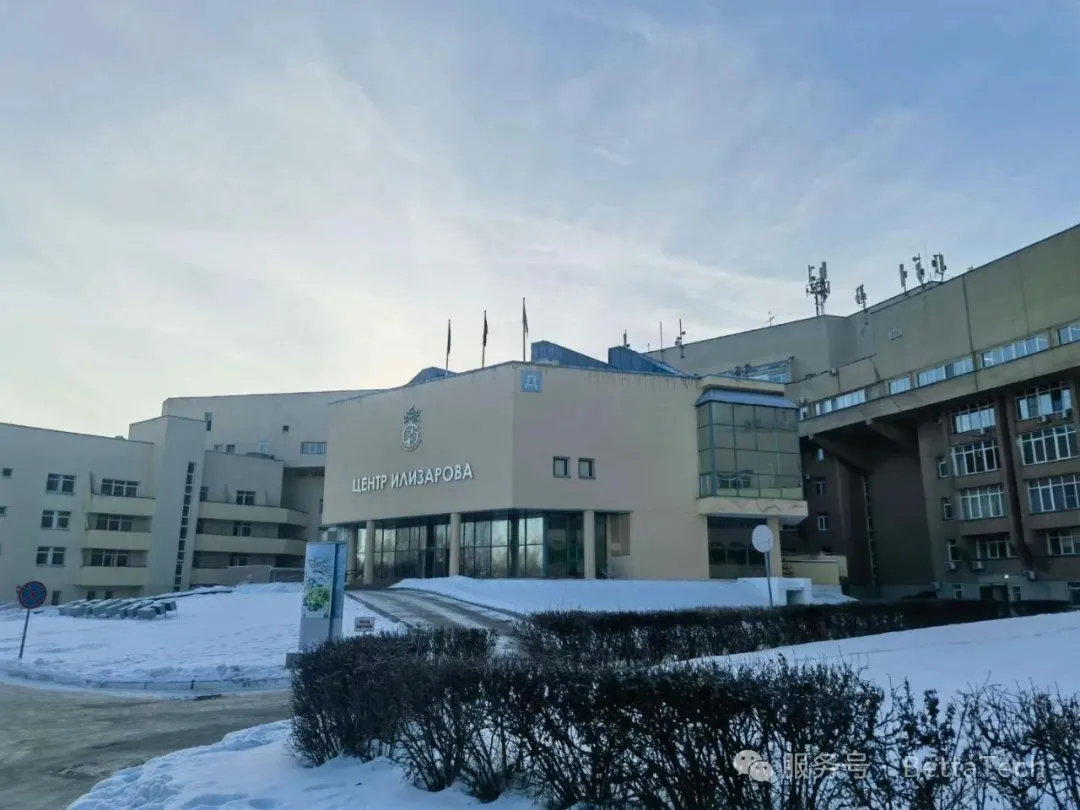
The establishment of the Ilizarov Center can be traced back to the 1950s when Dr. Gavriil Ilizarov proposed a new method of fracture healing, which later developed into a revolutionary technology - the Ilizarov external fixator. This technique uses an external device to fix fracture sites and promotes bone healing and lengthening through subtle mechanical tension.
Since then, the Ilizarov Center has continued to grow and develop, becoming one of the world's leading research and clinical centers in orthopedic surgery and bone reconstruction. Today, it has become an important global medical teaching and research center.
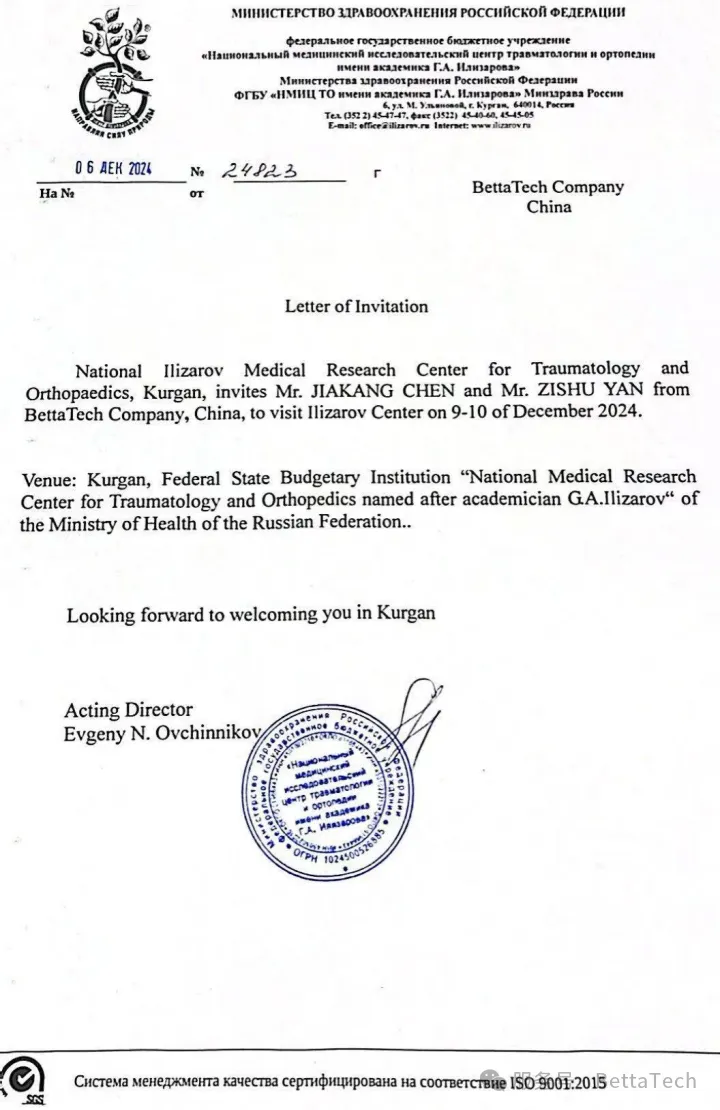
At the invitation of Russia's National Ilizarov Center, the Betta Medical team, led by General Manager JK Chen, arrived in Kurgan, Russia on December 9th for a two-day academic exchange and innovative product presentation. During this visit, we showcased and shared our latest developed six-axis robotic external fixator. This innovative technology represents cutting-edge advancement in orthopedic treatment, combining the advantages of robotics and external fixation systems to provide more precise and personalized treatment solutions.
The Ilizarov Center is world-renowned for its excellent medical technology and innovative spirit, and this visit undoubtedly brought valuable learning and exchange opportunities for the Betta Medical team.
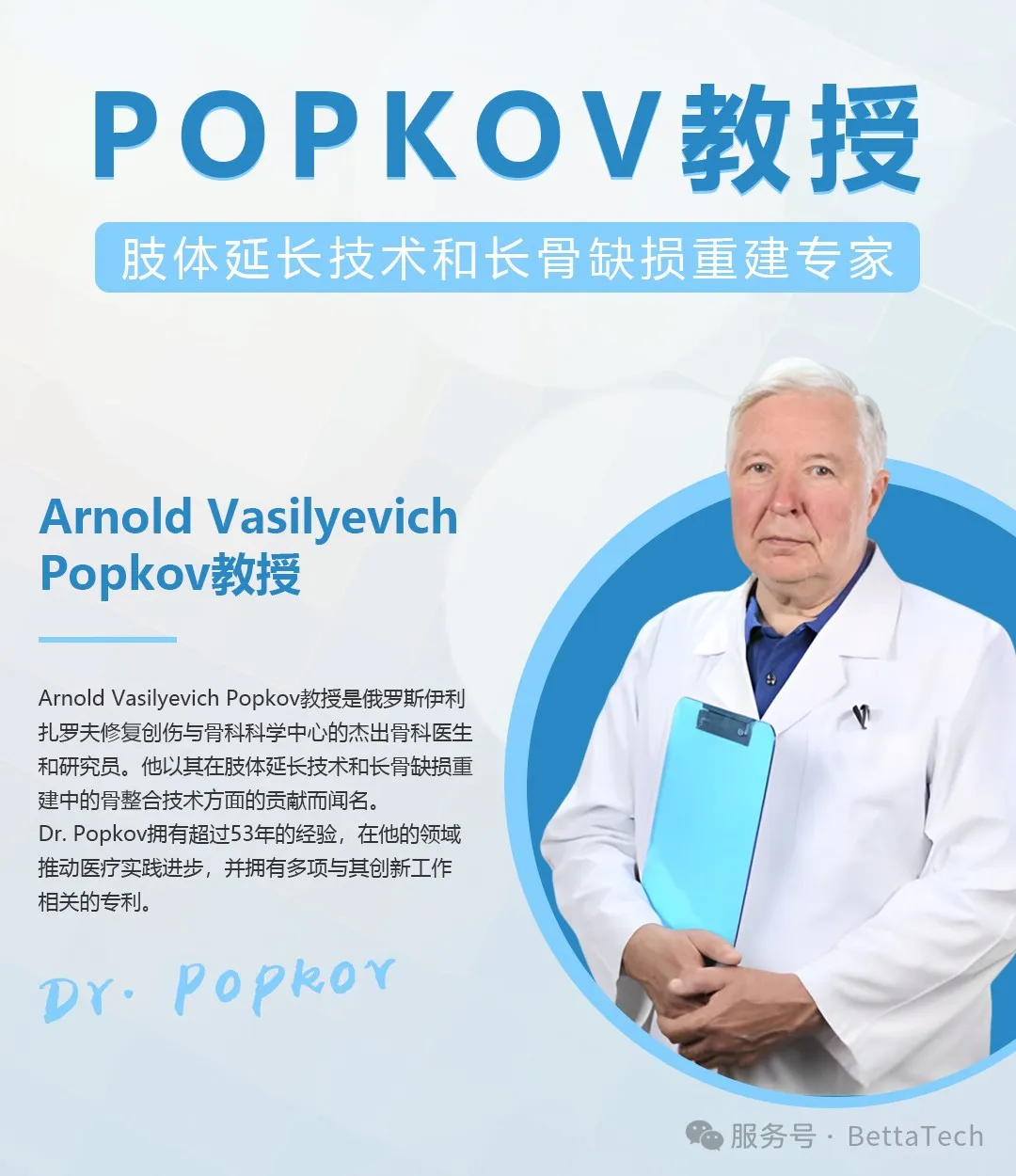
Professor Popkov from the Ilizarov Center introduced the significant therapeutic effects of Ilizarov technology in treating limb orthopedic conditions, bone lengthening, and bone deformity correction.
Professor Popkov's research and practice demonstrate that Ilizarov technology has broad application prospects in treating limb orthopedic conditions. This technology can help solve problems that traditional treatment methods cannot address, particularly significant in complex fractures, bone lengthening, and bone deformity correction.
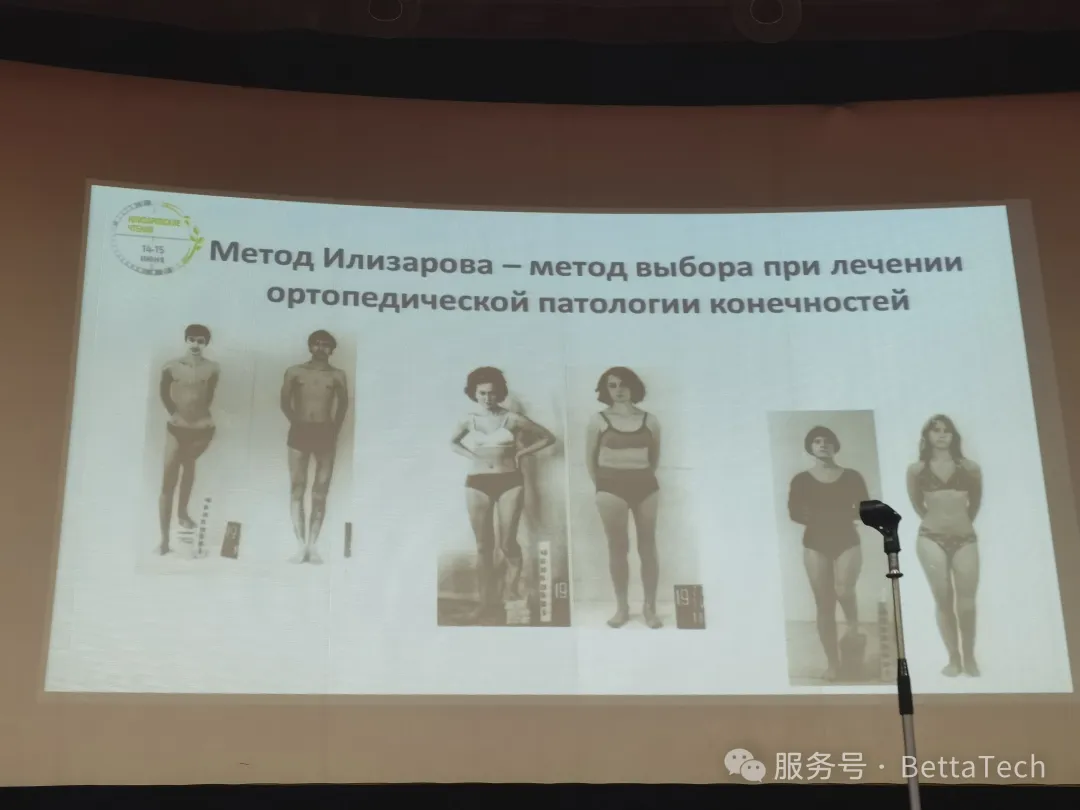
Professor Popkov introduced the remarkable therapeutic effects of the Ilizarov method in treating bone lengthening, bone deformity, and correction, and also indicated that intelligent external fixators are more beneficial for patient treatment and rehabilitation compared to traditional external fixators.
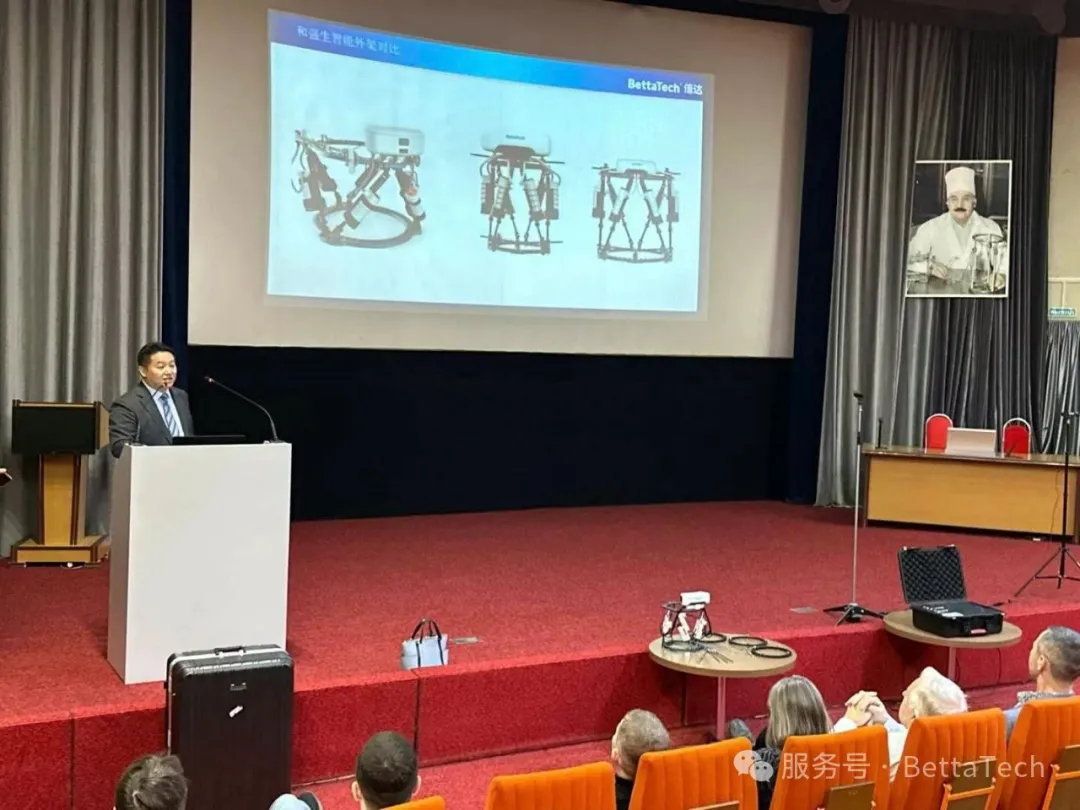

Betta Medical's General Manager JK Chen gave a detailed introduction to the Ilizarov Center's expert team about Baide Medical's recent development achievements, especially in the field of intelligent external fixation. BettaTech has consistently adhered to the integration of medical and engineering principles, dedicating itself to the innovative research, development, manufacturing, and sales of high-end, intelligent orthopedic products, providing effective solutions for fractures, bone lengthening, bone deformities, and limb reconstruction.
Mr. Chen detailed the product development team led by internationally renowned orthopedic experts, BettaTech's continuous cooperation and exchange with domestic and international doctors, development of new products and patent technologies, and BettaTech's breakthrough achievements in six-axis robotic external fixator research and innovation.
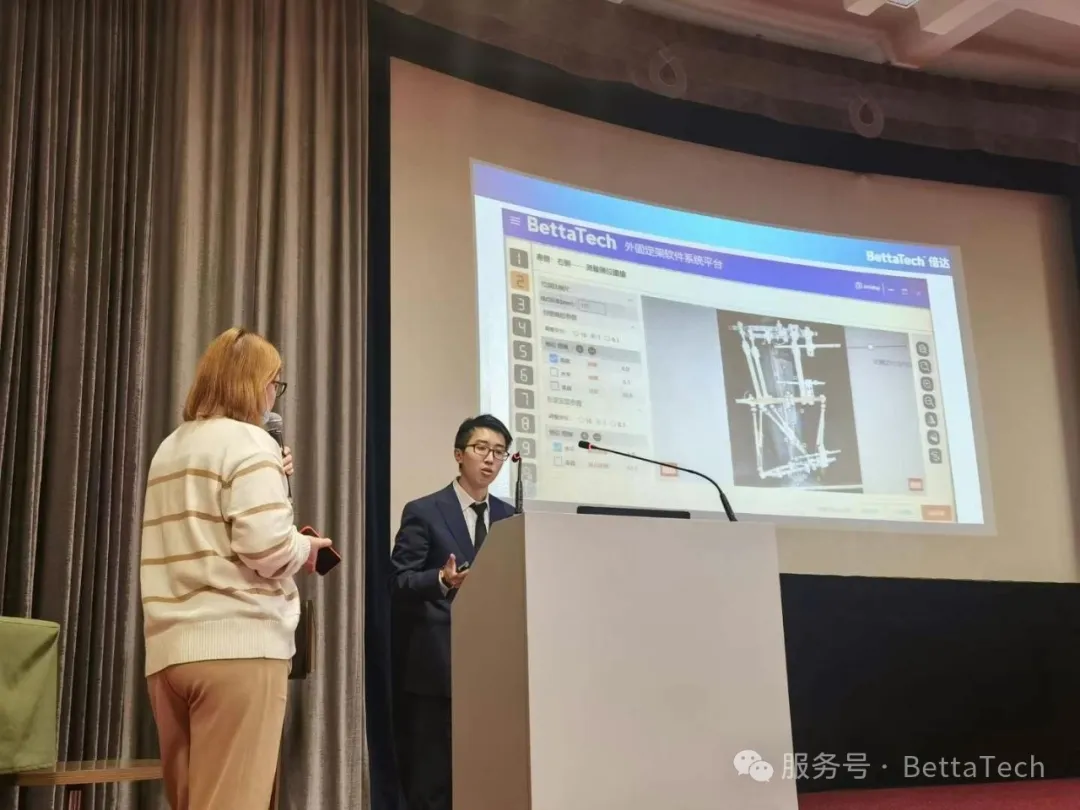
BettaTech's International Department Manager Jackson Yan provided a detailed introduction to the practical clinical applications of BettaTech's self-developed six-axis external fixator software.
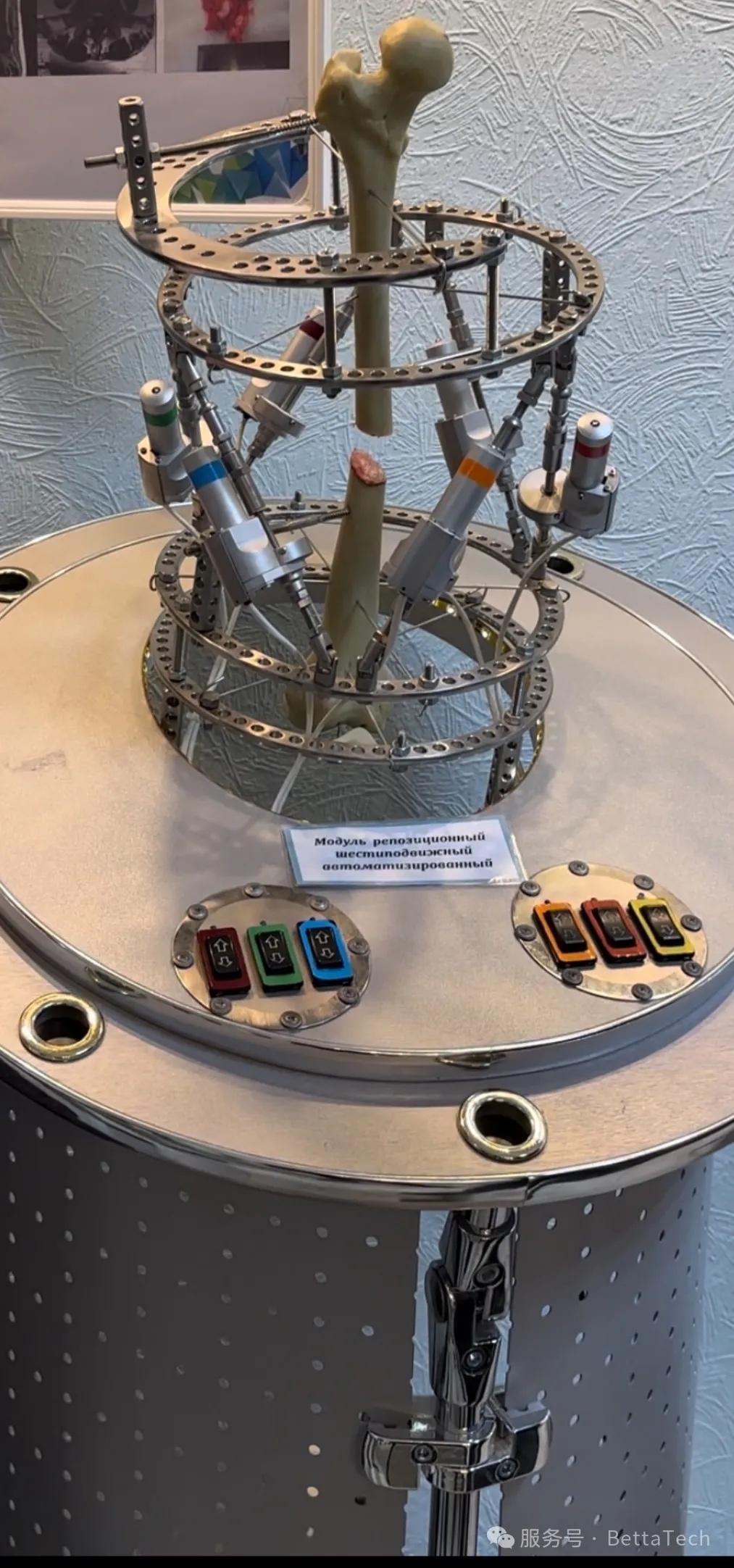
During this visit, experts from the Ilizarov Center also shared their self-developed electric six-axis external fixator, which is equally significant in orthopedic treatment. The Ilizarov team detailed the design concepts, technical features, and actual clinical effects of their electric six-axis external fixator. Both parties engaged in in-depth exchanges and discussions about key technical parameters such as motor size, power, and adjustment precision, particularly regarding performance in different clinical scenarios.
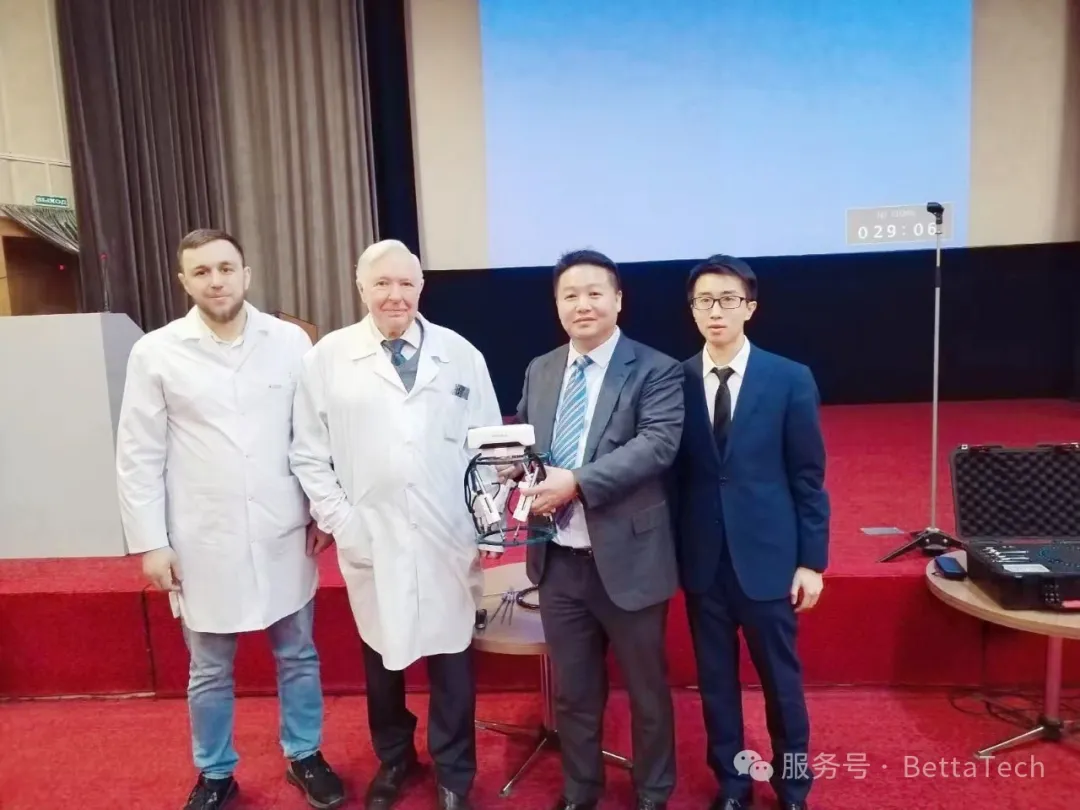
The experts and professors present unanimously praised our latest developed six-axis robotic external fixator. They appreciated its innovative design combining advanced robotic technology with external fixation systems, recognizing its significant advantages in improving surgical precision, optimizing treatment outcomes, and reducing patient recovery time. Particularly in intelligent treatment and complex cases, the experts unanimously believed this technology could bring significant improvements to clinical practice and looked forward to its promotion and application in more actual cases.
During the visit, the Betta Medical team also toured the Ilizarov Memorial Museum, gaining deep insights into Dr. Gavriil Ilizarov's outstanding contributions and pioneering orthopedic techniques. The museum showcases Dr. Ilizarov's innovative achievements in orthopedics, especially his invented external fixation system, which is still widely used globally. Through this visit, the Betta Medical team not only gained a deeper understanding of Dr. Ilizarov's history and legacy but also felt his profound influence on global orthopedic treatment. This tour further strengthened the consensus between both parties on academic and technical cooperation, inspiring enthusiasm for deeper cooperation in orthopedic technology and treatment innovation.
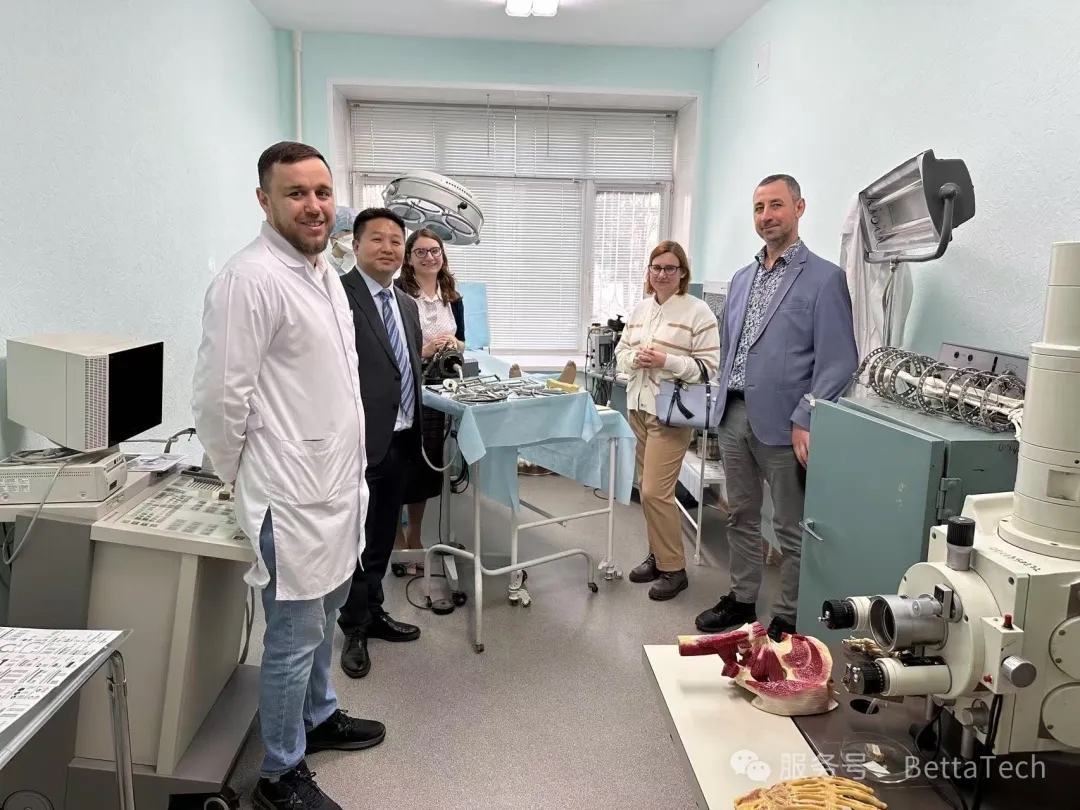
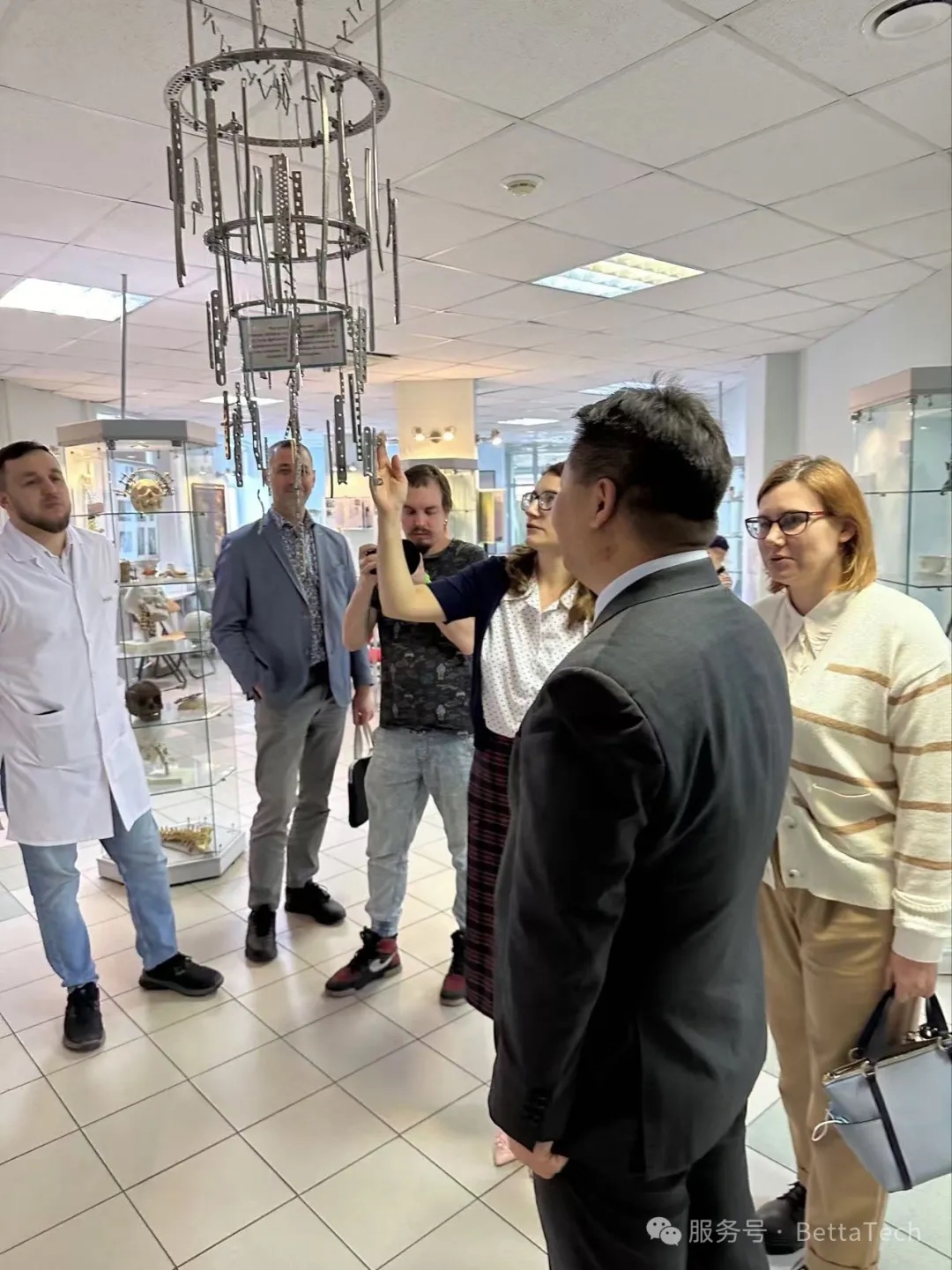
As the visit drew to a close, at the request of the Ilizarov Center staff, Betta Medical's General Manager JK Chen gladly wrote his reflection on this trip in the visiting scholars' book - "A true model of medical-engineering integration."
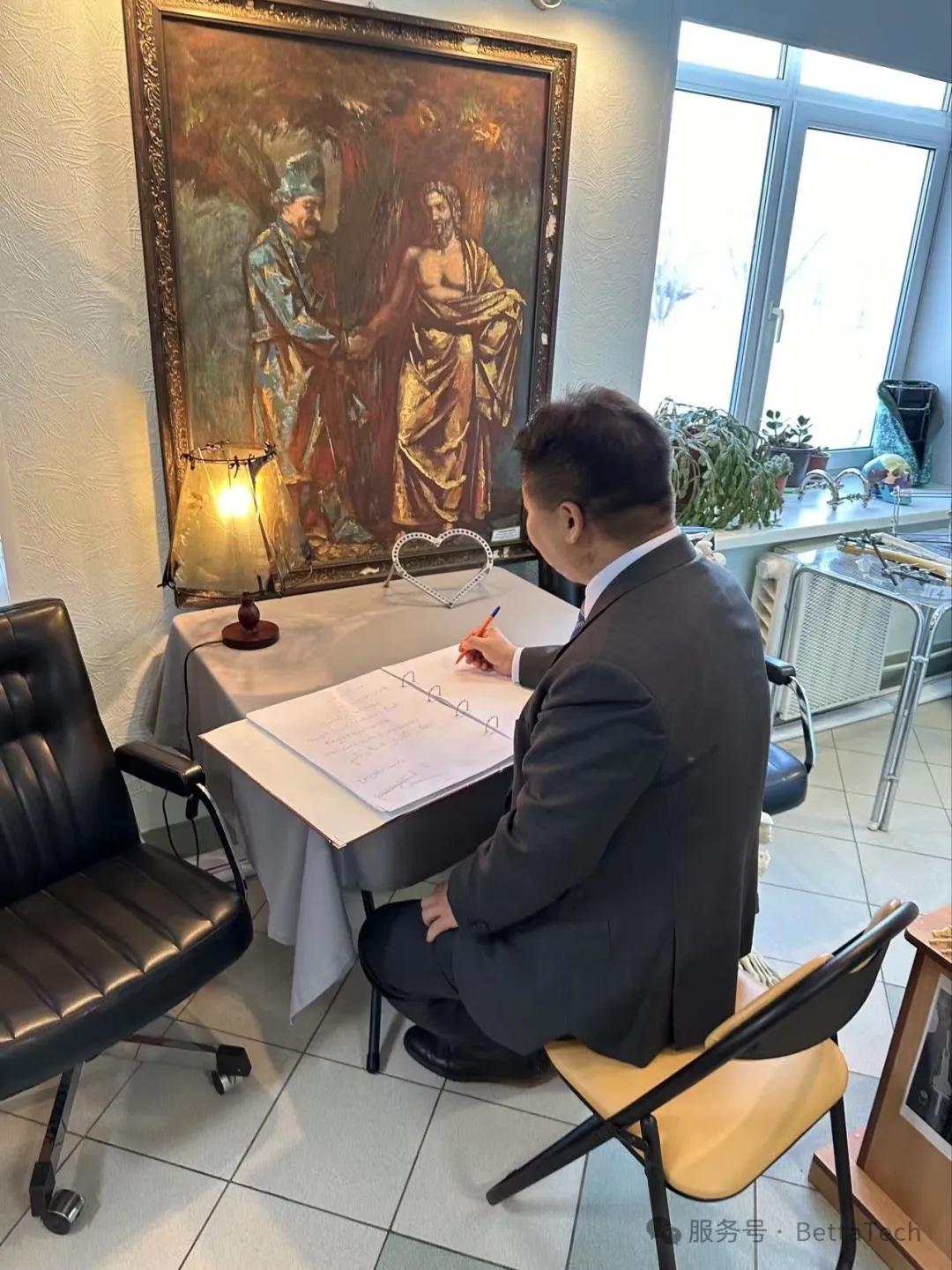
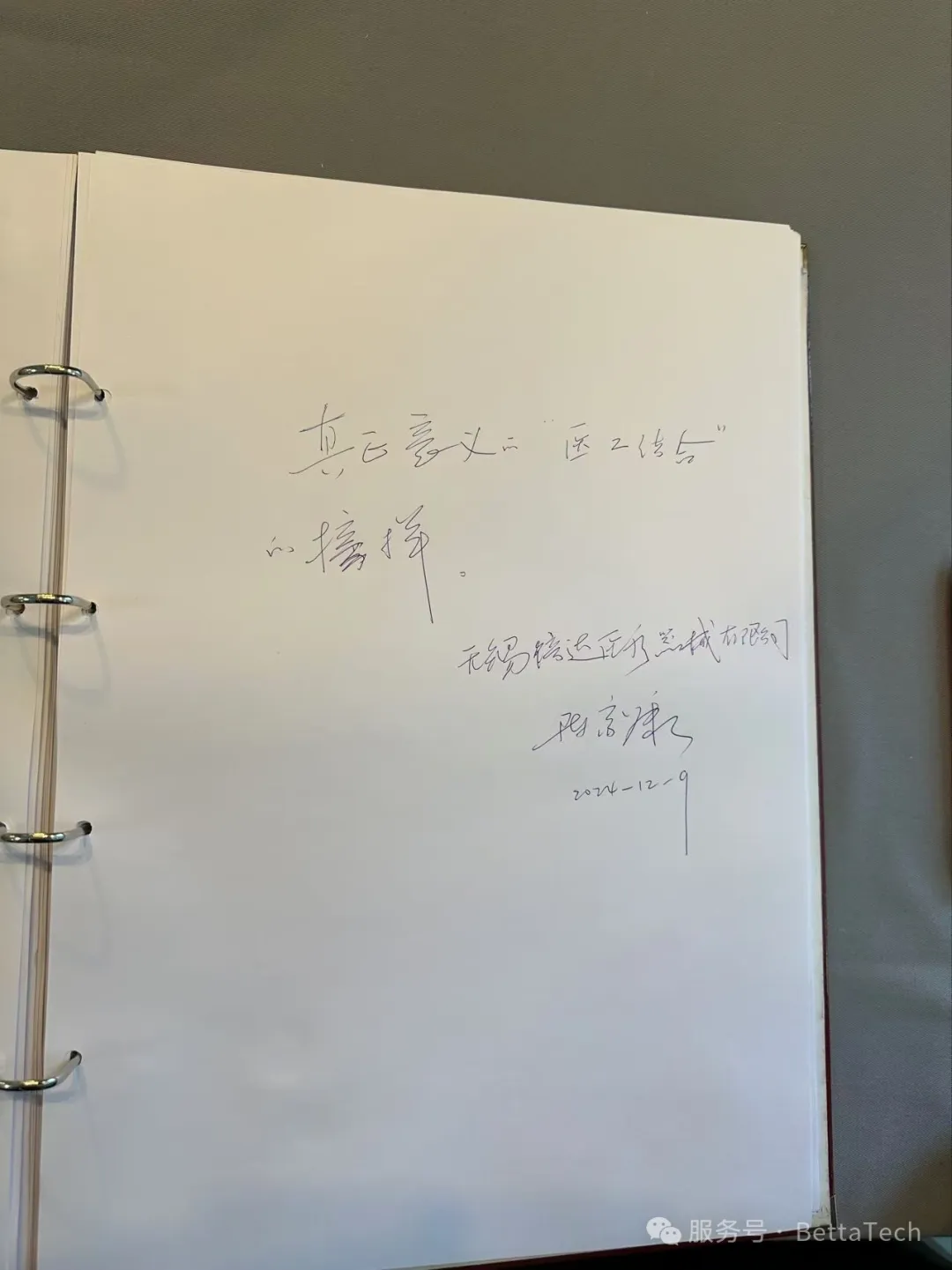
Betta Medical's visit to the Russian Ilizarov Center achieved positive results, with both parties reaching consensus on promoting academic exchange and technical cooperation in the orthopedic field, especially in innovative applications of robotic technology and external fixation systems. They also discussed plans to establish an international academic exchange center aimed at promoting the sharing and advancement of orthopedic technology globally and facilitating transnational cooperation between Chinese and foreign doctors in orthopedic surgery, robotic technology, and external fixation.
This visit laid the foundation for long-term cooperation between Betta Medical and the Ilizarov Center. In the future, both parties will further strengthen cooperation in academic research, technological innovation, and clinical applications to jointly promote the development of orthopedic treatment technology.